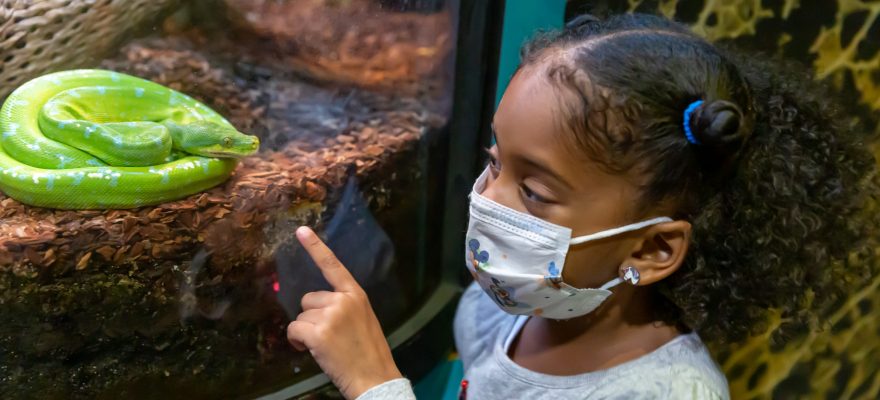
There are so many places to see animals in Staten Island and nearby. You can visit one of the many zoos or nature centers in the city, or walk through a park where birds soar above and adorable squirrels scurry across your path. But right over the Bayonne Bridge on the New Jersey side is another little-known place to see animals. The Liberty Science Center in Jersey City, NJ, is known for its impressive science exhibits, but most Staten Islanders would be surprised to find out it’s also home to some cool creatures of all kinds.
Animal Exhibits at the Liberty Science Center
Embark on a wildlife adventure with your family to the Liberty Science Center. Set in the expansive Liberty State Park, Liberty Science Center features two huge animal exhibits that youngsters—and the young at heart—will enjoy.
Begin your journey at the museum’s Wild About Animals exhibit, which is home to more than 100 species of wildlife. And when we say wild, we mean wild! See your child’s face glow while watching a rose-hair tarantula and Madagascar hissing cockroaches creep along their habitats and snakes slither through intricate mazes (yikes).
If creepy crawlies aren’t your cup of tea, reset your eyes by checking out some more traditionally cute chonks. Chinchillas, parrots, monkeys and sooo many other animals call the Liberty Science Center home.
Next, continue your adventure at the Our Hudson Home exhibit. As its name implies, this exhibit focuses on the Hudson River. Here, you’ll see native species such as black drum fish, summer flounder and more. You’ll discover the importance of this river as a means of travel and commerce, a source of food, and a place to play!
“This gallery has quite a few animals in it, but it goes a little bit deeper than that,” Fred Hartmann, Liberty Science Center’s director of guest programs, said “It really is showing the relationships and interactions between the animals and creatures that live in and around the river, the people who live and work around the river, and the physical river itself, and how these three things are always interacting with one another.”
As fun as it is to see these amazing animals, your kids will learn a lot throughout their adventure. Actually, you’ll learn a lot too! You’ll learn about the natural adaptations these animals have to survive in the wild. You’ll learn about their plight in the wild and how you can help save them from extinction.
“It’s important for kids and guest of all ages to get to see and learn and interact with animals because it builds empathy,” Hartmann said. “I think it’s really hard for people to care a lot about something unless they actually get to see that animal and learn about that animal. By getting to meet these incredible creatures, you learn to care more about them and to care more about the Earth in general.”
Meet the Animals
Now, without further adieu, let’s get up close and personal with just a few of the animals you’ll see along your wildlife adventure, with Hartmann as your guide!
Naked Mole Rat
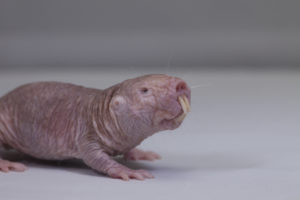
These little rodents act just like ants! They live underground and have a social structure that is similar to ants and bees. There’s actually a queen naked mole rat who has all the babies and employs the others to build the town’s tunnels and collect all the food. It’s like a little naked mole rat city!
Madagascar Hissing Cockroach
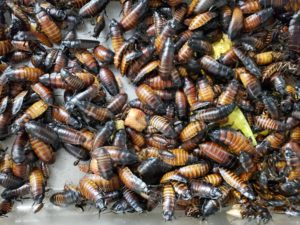
Don’t worry, these aren’t the kind of roaches you’re thinking of! These are more exotic. And there are thousands on exhibit!
Chinchilla
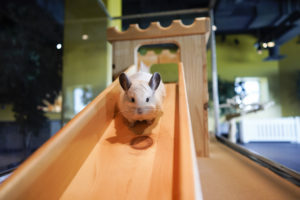
These fluffy-tailed rodents get the royal treatment at Liberty Science Center. They live in an town called Chinchilla Castle, where they can jump, play and roll around in dust—a substance that is needed to help keep their coats clean. (How cute is that??)
“It’s always adorable to watch the chinchillas, and the public loves them,” Fred Hartmann, Liberty Science Center’s director of guest programs, said. “The chinchillas themselves are getting something out of it, too. It’s great enrichment for them. Of course they don’t live in castles in the wild, but they live in boulder fields and things like that would have crevices like our castle.”
Green-winged Macaw
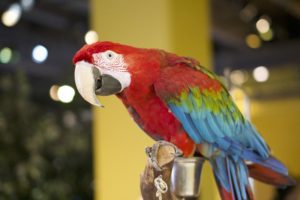
This parrot’s name is Mickey, and he’s quite impressive. He loves people! He lives behind the scenes but has a huge window so guests can still see him.
“The biggest star of all is our macaw,” Hartmann said. “ Guests can go right up to the window and see him. He loves the attention.”
Jungle Carpet Python
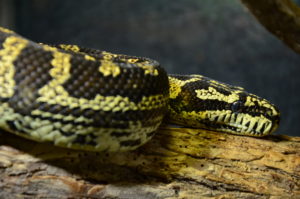
Lots of snakes live at the Liberty Science Center, including this jungle carpet python.
Timber Rattlesnake
Speaking of snakes, did you know that rattlesnakes can be found in the forests of New Jersey? It’s true! This exhibit highlights the timber rattlesnake, one of several rattlesnake species that can be found in the state.
“This is a really cool animal to show here because this is an animal that actually lives in the state of New Jersey,” Hartmann said. “A lot of people might now even realize we have rattlesnakes here.”
Cotton-top Tamarins
Meet a family of critically endangered cotton-top tamarin monkeys. You’ll learn how you can use less energy and resources to help save their habitat in the wild.
Black Drum Fish
This is a large, bottom dwelling fish that lives in the Hudson River. They are bottom-dwelling fish and have whiskers that come out of the bottom of their chin that they use to drag along the sand to look for food. They’re pretty big, too.
“They can get pretty large,” Hartmann said. “Probably larger than some of the young guests who visit.”
What You Need to Know About Visiting the Liberty Science Center
Where is the Liberty Science Center located?
Liberty Science Center is located at 222 Jersey City Blvd., Jersey City, NJ.
How much are Liberty Science Center tickets?
General admission is $29.99; $24.99, ages 2-12.
Is there a separate fee to see the animal exhibits at Liberty Science Center?
No. The animal exhibits are free with admission.
When are the animal exhibits at Liberty Science Center open?
Animal exhibits are open any time the museum is open. Regular winter hours are Thursday-Friday, 10am-4pm; Saturday-Sunday, 10am-5pm.
For more information, visit lsc.org or follow the Liberty Science Center on Facebook or Instagram.






